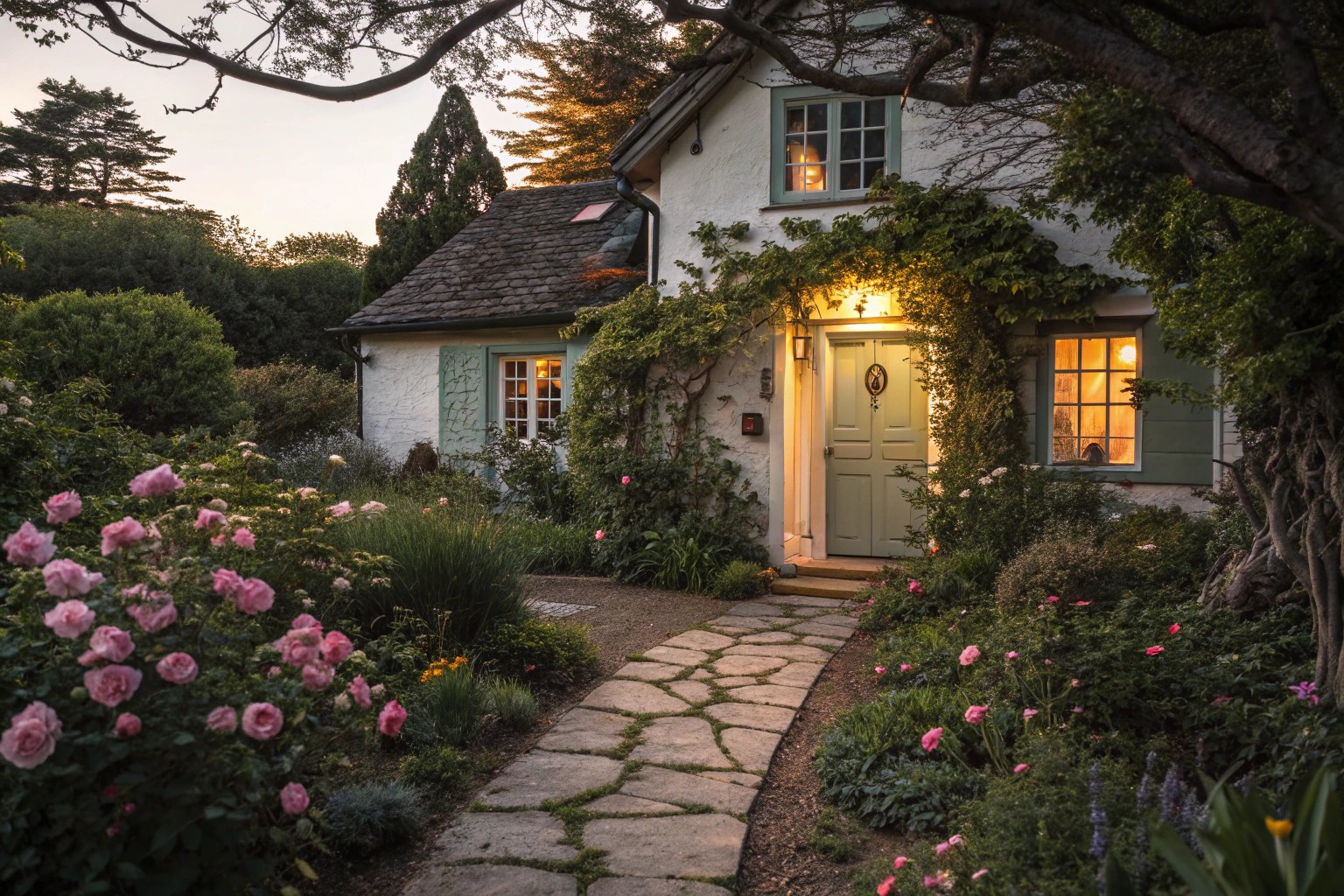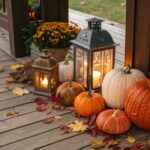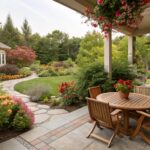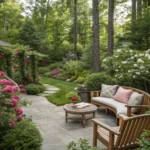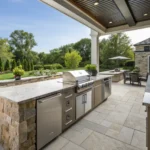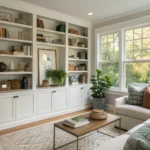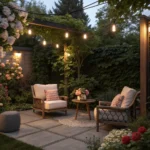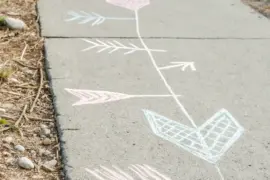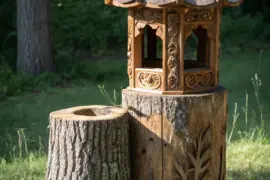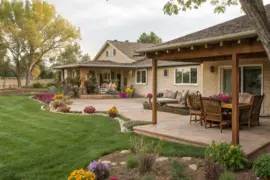Your outdoor entryway serves as the handshake your home offers before any conversation begins, setting expectations and creating emotional connections that extend far beyond the threshold. This transitional space between public and private realms demands thoughtful consideration of materials, plants, lighting, and functional elements that work harmoniously to welcome guests while reflecting your home’s character.
Design Principles: Creating Cohesive Arrival Sequences
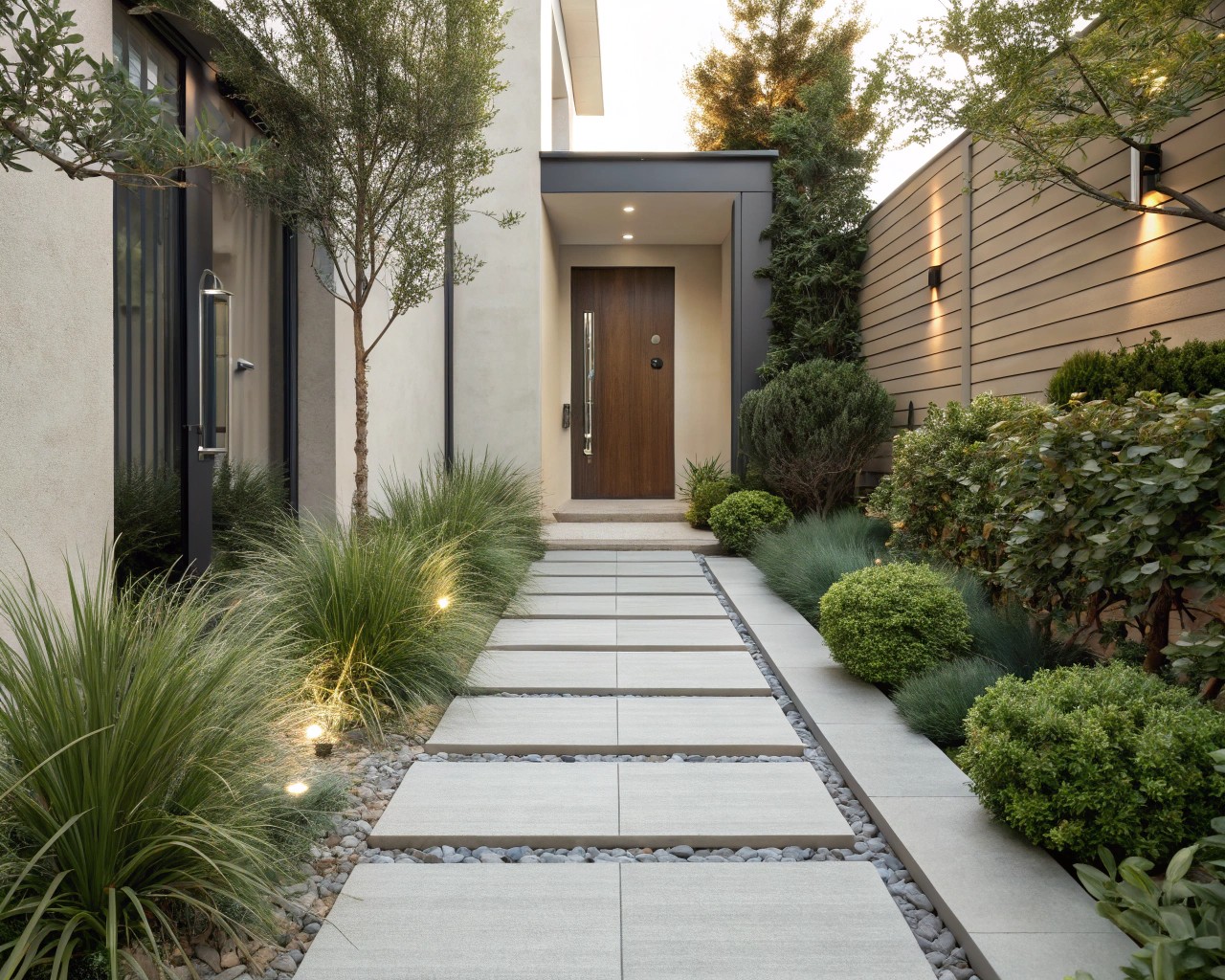
The most successful outdoor entryways function as carefully orchestrated three-act experiences that guide visitors through threshold, transition, and connection zones. I’ve observed that homeowners often underestimate the psychological impact of this arrival sequence, focusing solely on the front door while neglecting the journey that leads there.
Spatial Clarity and Visual Anchoring
Effective entryway design begins with establishing clear focal points that draw the eye and create intuitive navigation paths. The entrance should communicate your home’s design language immediately, whether through architectural details, material choices, or landscaping elements that echo the interior aesthetic.
Key Design Strategies:
- Directional Cues: Use strategic lighting, material transitions, and sight lines to guide movement naturally
- Proportional Relationships: Ensure walkway width corresponds to your home’s scale—typically 5 feet for primary entrances, 3 feet for secondary paths
- Visual Hierarchy: Create layers of interest that unfold progressively as visitors approach
Architectural Integration
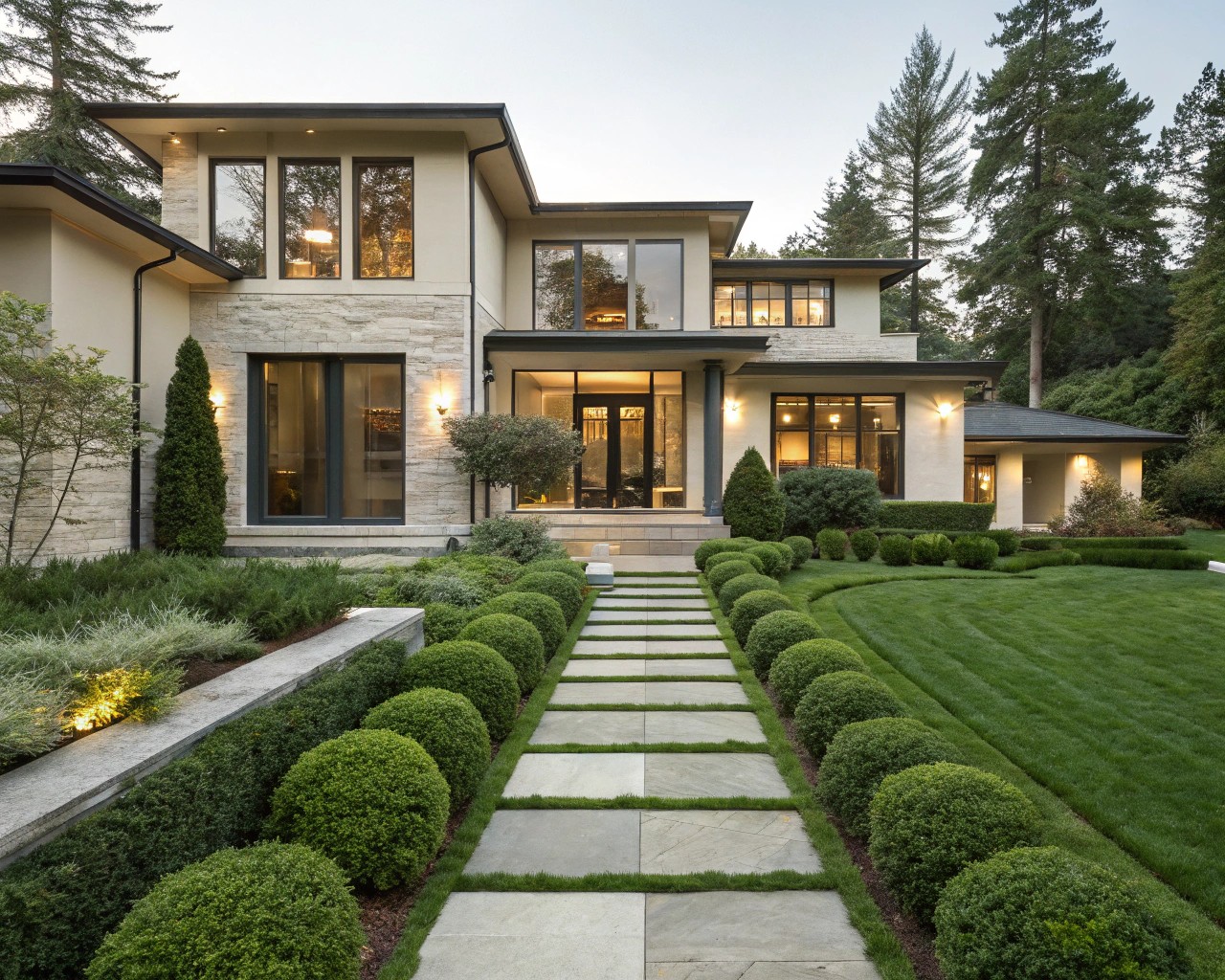
Your entryway design should complement rather than compete with your home’s existing architecture. Contemporary homes benefit from clean lines and minimalist plantings, while traditional structures can accommodate more elaborate stone work and formal garden elements.
Materials and Construction: Building for Beauty and Durability
The foundation of any successful outdoor entryway lies in selecting appropriate materials that balance aesthetic appeal with practical performance. Each material choice carries implications for maintenance, longevity, and overall design impact.
Primary Walkway Materials
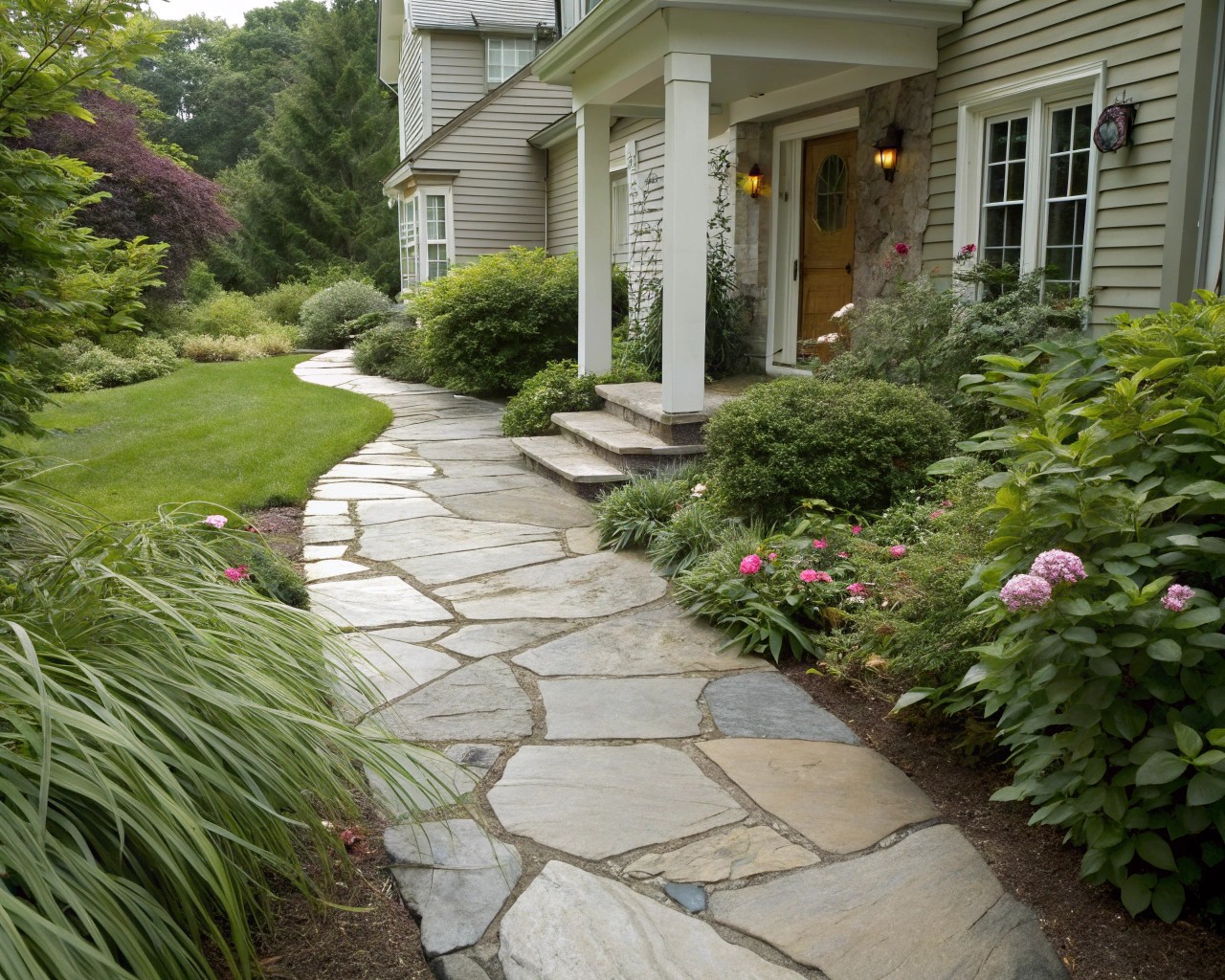
| Material | Durability | Maintenance | Cost | Best Applications |
|---|---|---|---|---|
| Concrete Pavers | High | Low | Moderate | Versatile patterns, heavy traffic areas |
| Natural Stone | Very High | Moderate | High | Upscale homes, formal landscapes |
| Brick | High | Low | Moderate-High | Traditional homes, historic districts |
| Flagstone | Very High | Moderate | High | Irregular patterns, natural aesthetics |
| Gravel/Aggregate | Moderate | Low | Low | Informal settings, drainage areas |
Installation Considerations
Proper installation techniques significantly impact long-term performance regardless of material choice. Concrete pavers require well-prepared bases to prevent shifting, while natural stone demands skilled labor for level installation. The labor-intensive nature of flagstone installation makes it more expensive initially, but the investment pays dividends in durability and visual impact.
Critical Installation Elements:
- Drainage Design: Incorporate proper grading and drainage solutions to prevent water accumulation
- Base Preparation: Ensure adequate foundation depth and compaction for chosen materials
- Joint Management: Plan for appropriate spacing and filling materials between elements
Plant Selection and Landscaping: Creating Living Frameworks
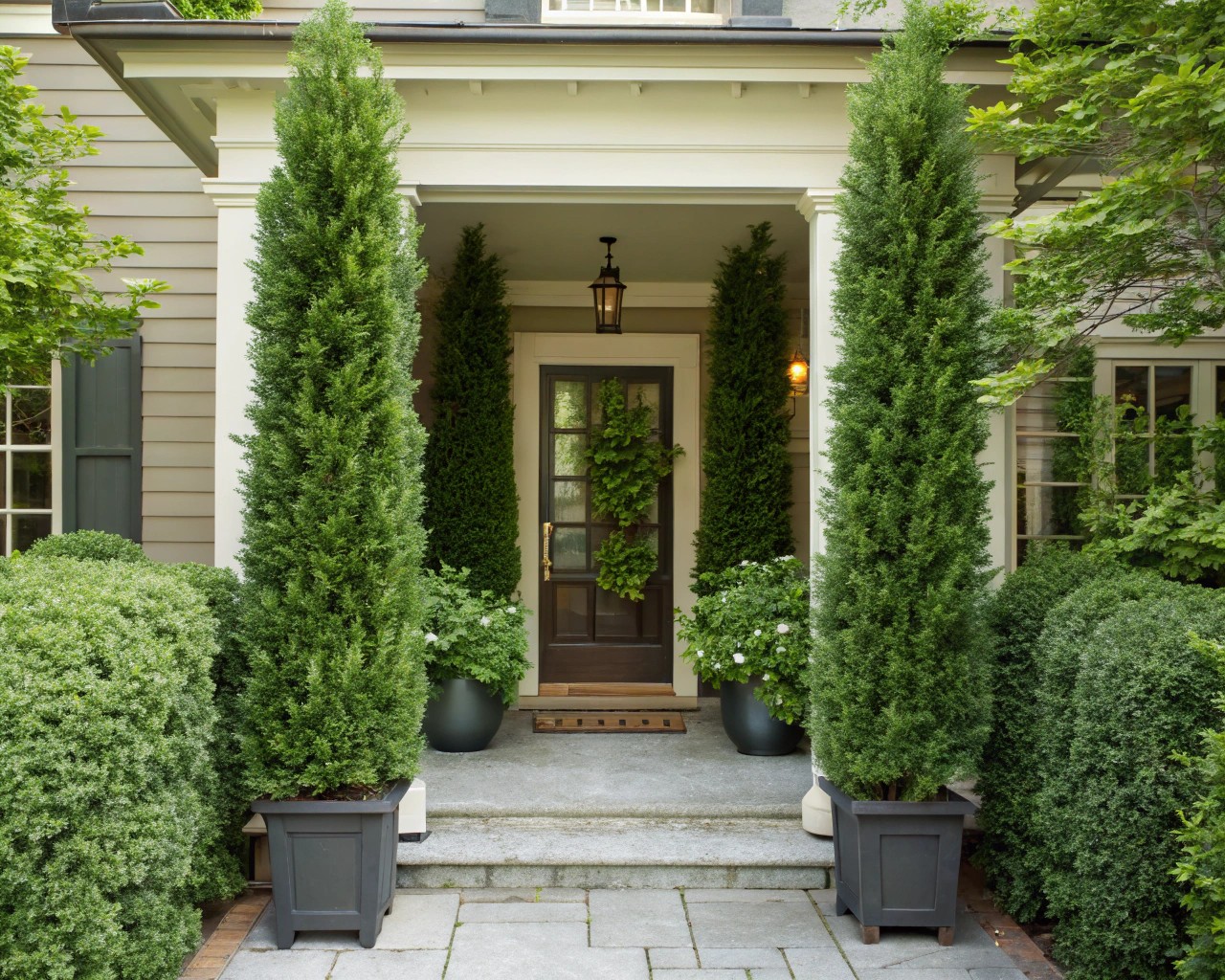
Strategic plant selection transforms functional walkways into engaging garden experiences that provide year-round interest and seasonal variation. The key lies in choosing plants with specific roles rather than random selections that compete for attention.
Functional Plant Categories
Vertical Accent Plants:
These serve as visual exclamation points that draw visitors along the path without consuming precious space. Effective choices include:
- Ornamental Grasses: Provide movement and texture while maintaining narrow footprints
- Irises (Iris spp.): Offer vertical structure with seasonal blooms (Zones 3-9)
- Red-hot Pokers (Kniphofia spp.): Create dramatic focal points (Zones 5-9)
Seasonal Interest Plants:
Berry-producing shrubs extend visual appeal into fall and winter months while providing wildlife habitat:
- ‘Winter Gold’ Winterberry (Ilex verticillata): Offers glowing orange fruits against winter landscapes (Zones 5-8)
- Beautyberries (Callicarpa spp.): Provide brilliant purple or white berries (Zones 5-9)
- Fothergillas: Combine spring bottlebrush flowers with spectacular fall color (Zones 4-8)
Layout Strategies
Continuous, flowing borders create more comfortable experiences than abrupt plantings that interrupt the visual journey. I recommend flanking walkways with dual borders that maintain consistent visual interest while avoiding monotonous repetition.
Planting Design Principles:
- Layered Heights: Combine ground covers, perennials, and shrubs for visual depth
- Color Coordination: Choose plants that complement your home’s exterior colors
- Maintenance Zones: Group plants with similar care requirements together
Lighting Design: Illuminating Welcome and Safety
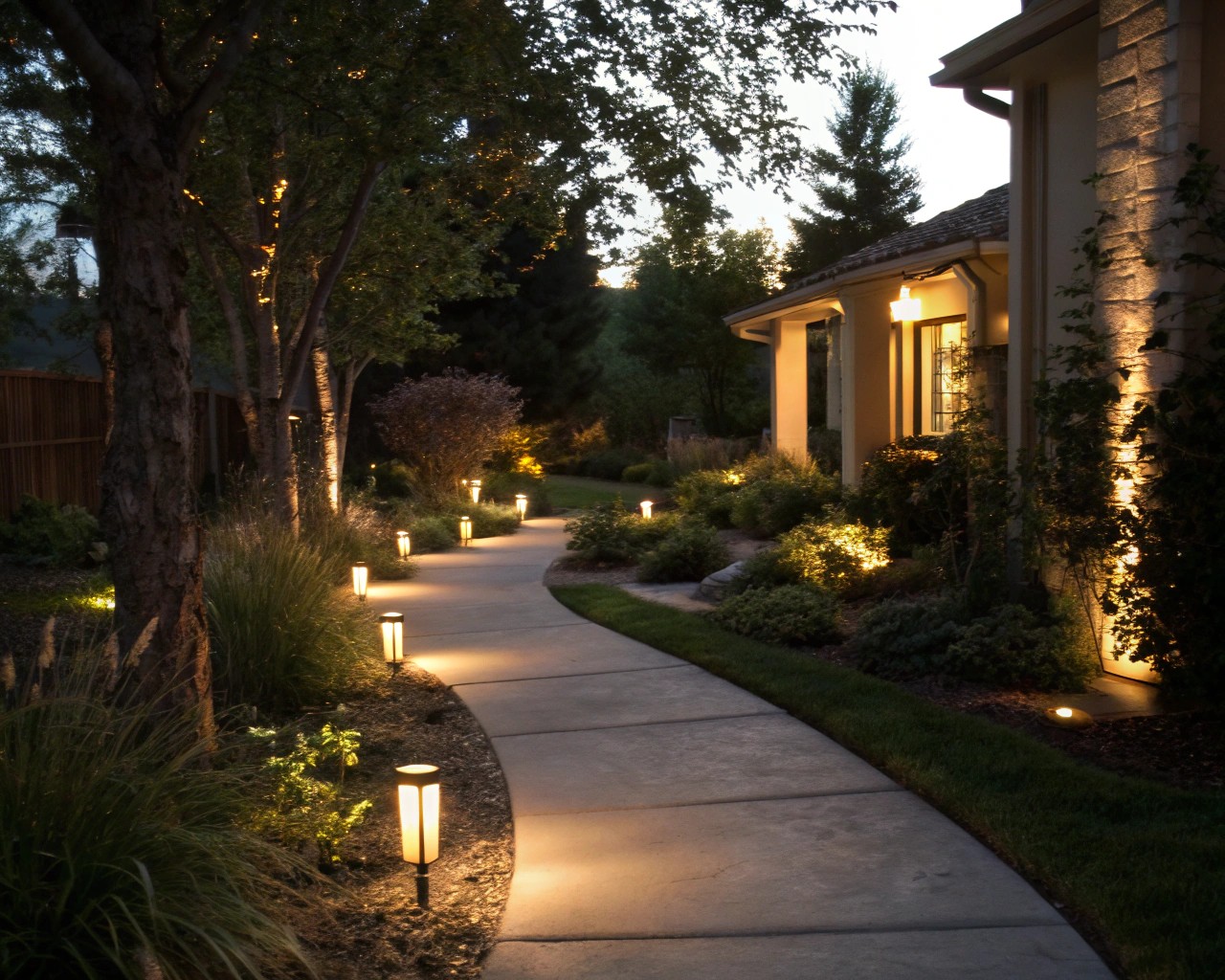
Thoughtful lighting design transforms outdoor entryways from daytime-only spaces into evening destinations that enhance both safety and aesthetic appeal. The most effective lighting schemes combine ambient, task, and accent lighting in carefully balanced proportions.
Lighting Layer Strategy
Ambient Lighting:
Provides overall illumination that establishes the space’s general character and ensures basic visibility. Wall-mounted sconces or overhead fixtures create this foundational layer.
Task Lighting:
Focuses on specific functional areas such as steps, door handles, or house numbers. This ensures safe navigation while highlighting practical elements.
Accent Lighting:
Highlights architectural features, specimen plants, or decorative elements that contribute to the entryway’s visual appeal. Spotlights can draw attention to beautiful trees or garden sculptures.
Technical Considerations
Proper lighting intensity and color temperature significantly impact visitor comfort and safety. Warm light tones (2700K-3000K) create welcoming atmospheres, while cooler temperatures can feel institutional and uninviting.
Installation Guidelines:
- Dimming Capability: Install dimmers to adjust intensity based on time and occasion
- Energy Efficiency: Choose LED fixtures for longevity and reduced energy consumption
- Weather Resistance: Select fixtures rated for outdoor use in your climate zone
Functional Elements: Balancing Utility and Beauty
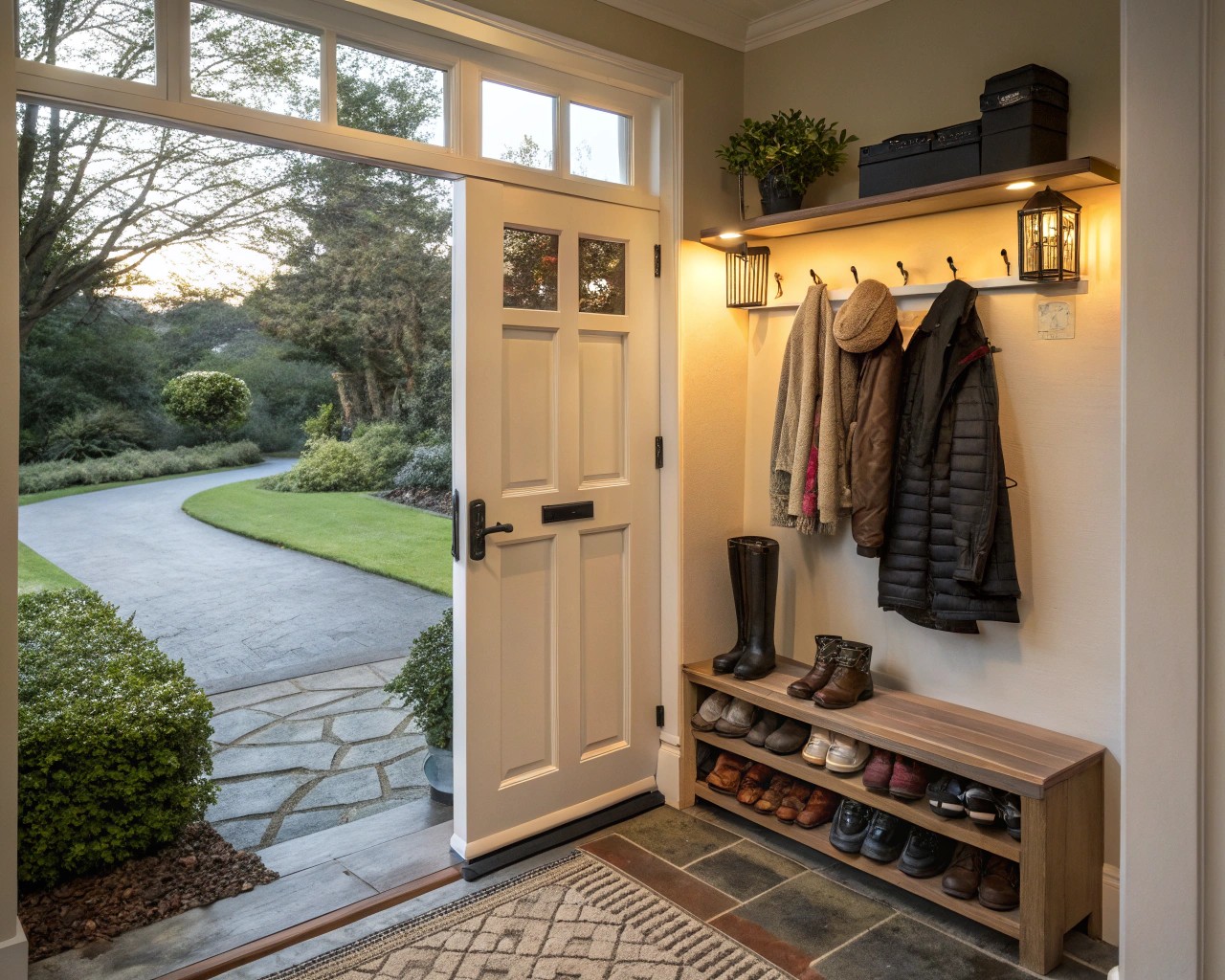
Successful outdoor entryways seamlessly integrate functional requirements with aesthetic goals, creating spaces that serve daily needs without compromising visual appeal. The most effective designs anticipate and accommodate routine activities while maintaining their composure under regular use.
Essential Functional Components
Arrival and Departure Support:
Every entryway should facilitate the natural rituals of coming and going:
- Key and Mail Management: Console tables or built-in niches for temporary item storage
- Shoe Transition: Discrete areas for footwear changes, particularly important in wet climates
- Coat Management: Hooks or closets positioned for easy access without cluttering sight lines
Weather Protection:
Climate considerations significantly impact entryway design requirements:
- Covered Areas: Porches, overhangs, or arbors provide shelter during inclement weather
- Drainage Solutions: Proper grading and drainage prevent water accumulation and ice formation
- Wind Barriers: Strategic plantings or structures protect against prevailing winds
Storage Solutions
Effective storage maintains organization while preserving aesthetic appeal. The key lies in balancing visibility with concealment based on personal preferences and lifestyle requirements.
Storage Strategy Options:
- Visible Storage: Open shelving and hooks for items you don’t mind displaying
- Concealed Storage: Cabinets and drawers for items requiring hidden storage
- Multi-functional Pieces: Benches with integrated storage, console tables with drawers
Seasonal Considerations: Year-Round Appeal
Thoughtful entryway design maintains visual interest and functionality across all seasons, adapting to changing weather conditions while preserving core aesthetic principles. This requires selecting materials and plants that perform well in your specific climate zone.
Seasonal Plant Selection
Spring Activation:
Choose plants that provide early season interest after winter dormancy:
- Spring Bulbs: Daffodils, tulips, and crocuses offer immediate color
- Early Perennials: Hellebores and bergenia provide structure and blooms
- Flowering Trees: Redbuds and dogwoods create dramatic seasonal displays
Summer Maintenance:
Select heat-tolerant plants that maintain appearance during peak growing season:
- Drought-Tolerant Perennials: Reduce maintenance requirements during hot periods
- Container Displays: Seasonal annuals that can be easily replaced
Fall Transitions:
Incorporate plants that provide autumn interest:
- Deciduous Shrubs: Fothergillas and beautyberries offer fall color and berries
- Ornamental Grasses: Provide texture and movement through winter months
Winter Structure:
Maintain visual interest during dormant seasons:
- Evergreen Foundation: Provide year-round structure and color
- Hardscape Elements: Stone, brick, and metal components maintain presence
Maintenance Scheduling
Regular maintenance preserves both functionality and appearance throughout the year:
Quarterly Tasks:
- Plant Pruning: Remove dead or damaged growth, shape overgrown specimens
- Surface Cleaning: Power wash walkways, remove debris and stains
- Lighting Maintenance: Clean fixtures, replace bulbs, check connections
Annual Tasks:
- Sealant Application: Protect natural stone and brick surfaces as needed
- Plant Division: Rejuvenate overgrown perennials, relocate as necessary
- Drainage Inspection: Clear gutters, check grade, repair damage

